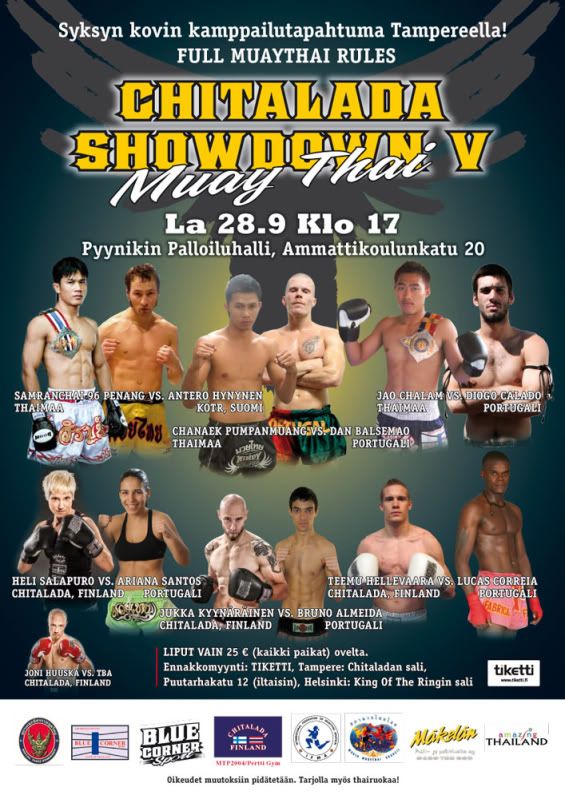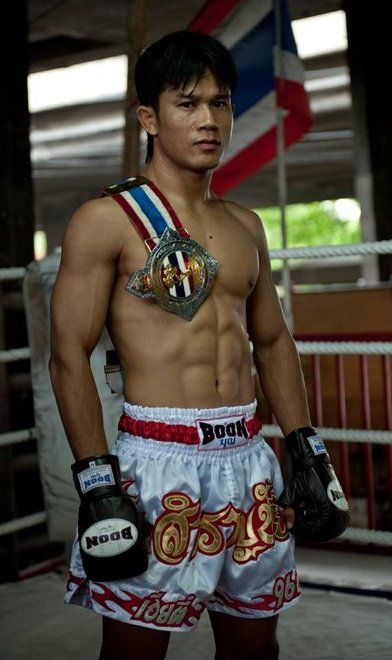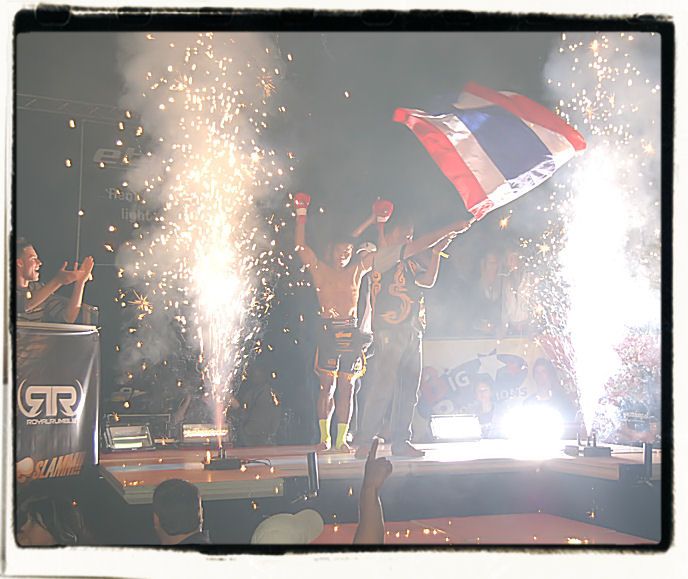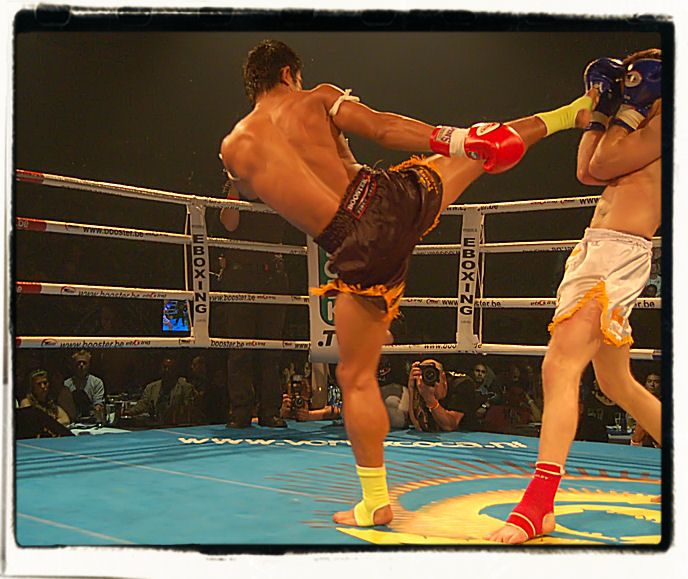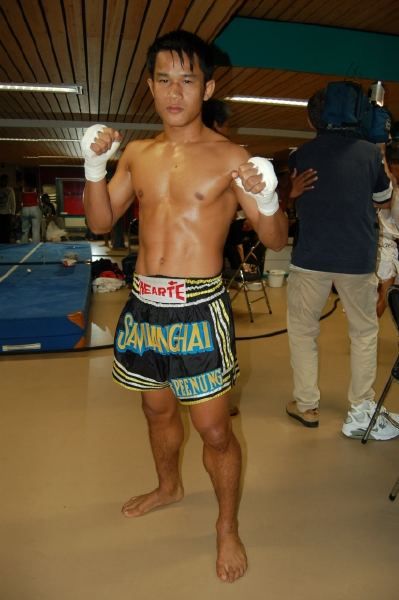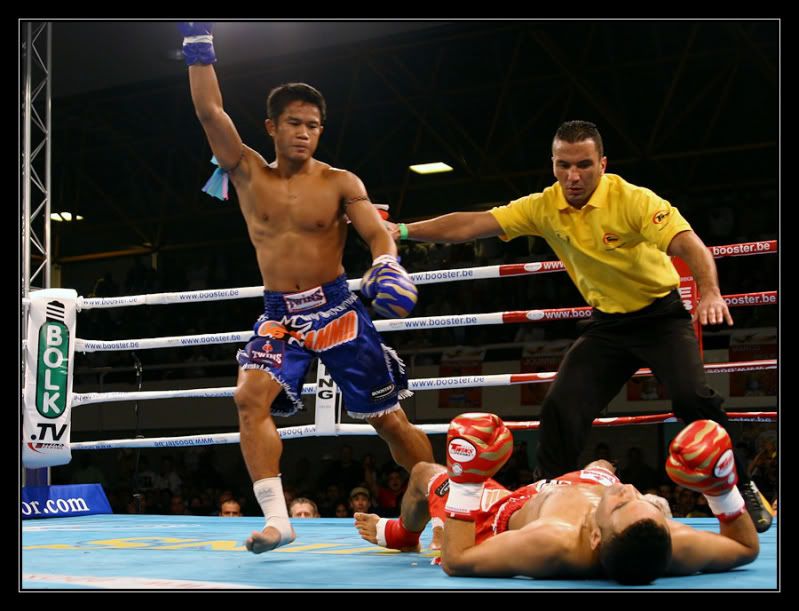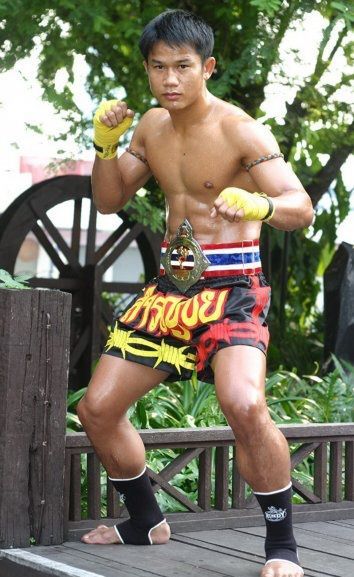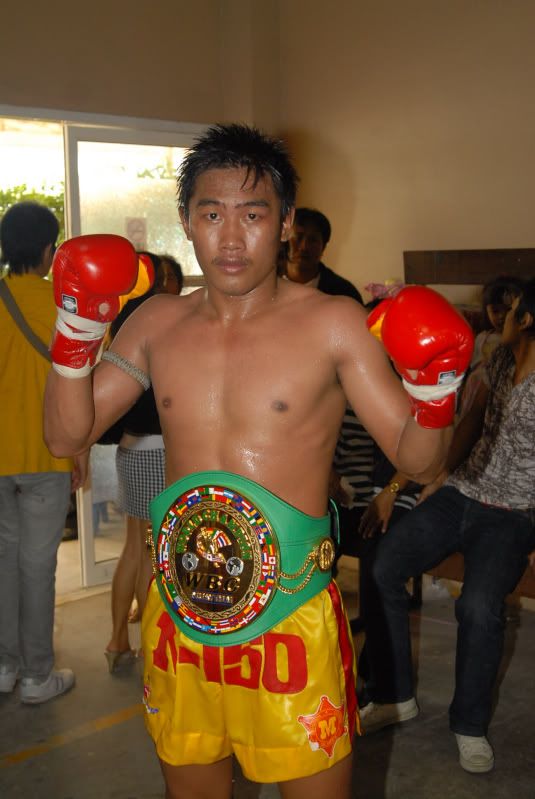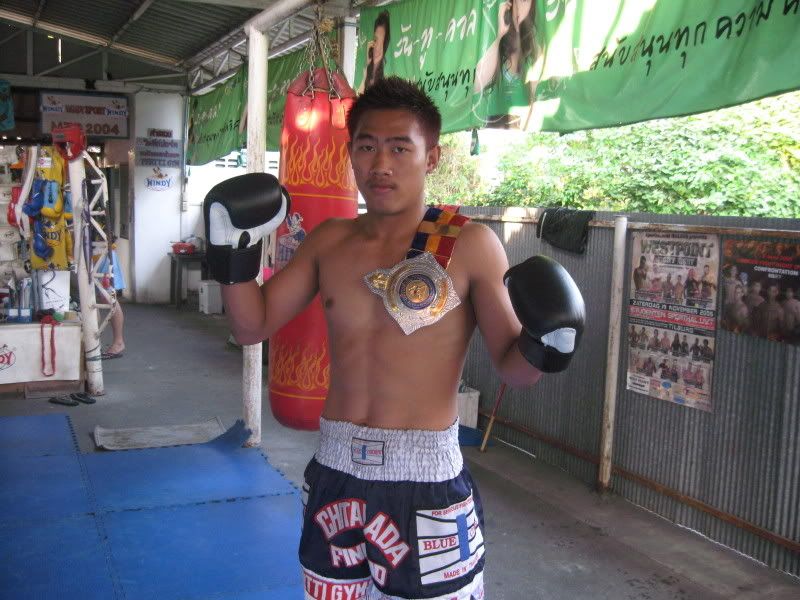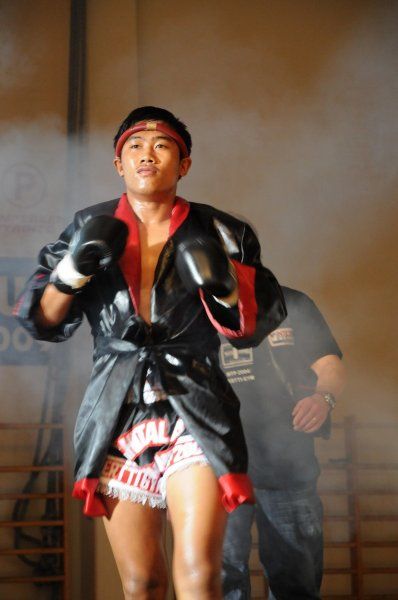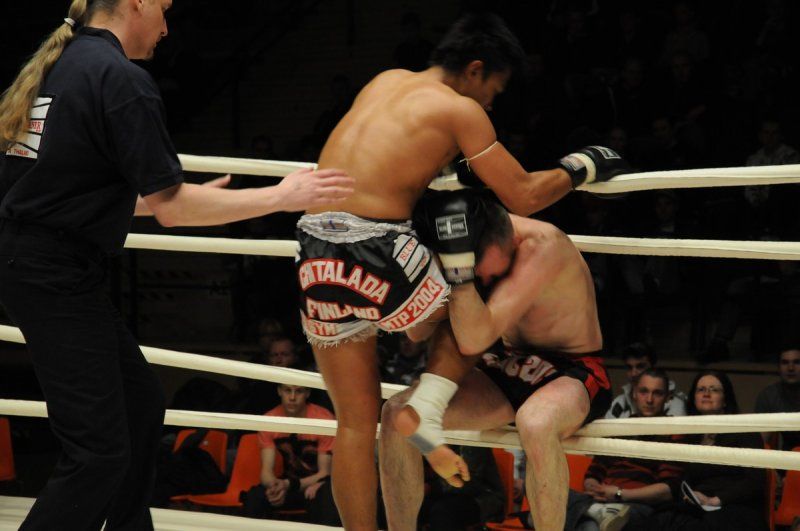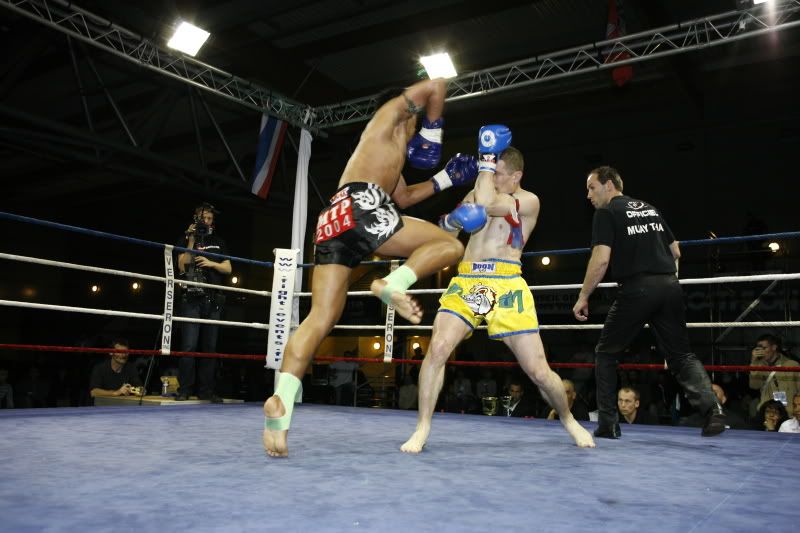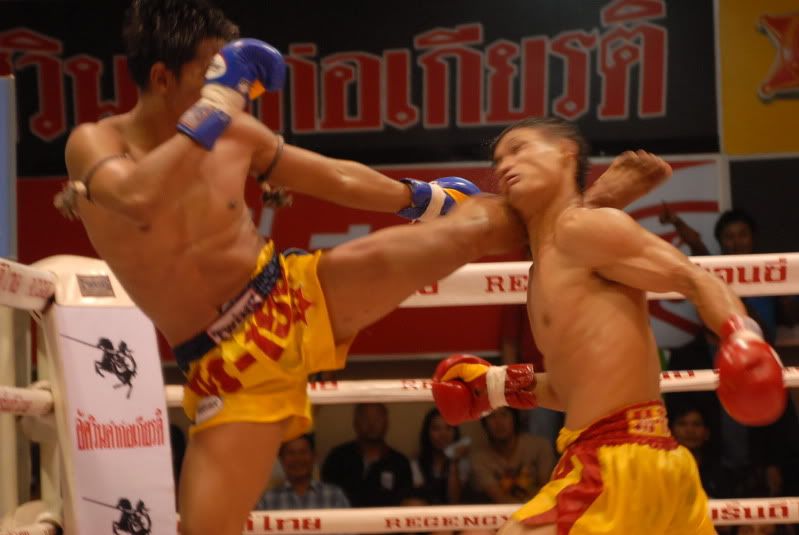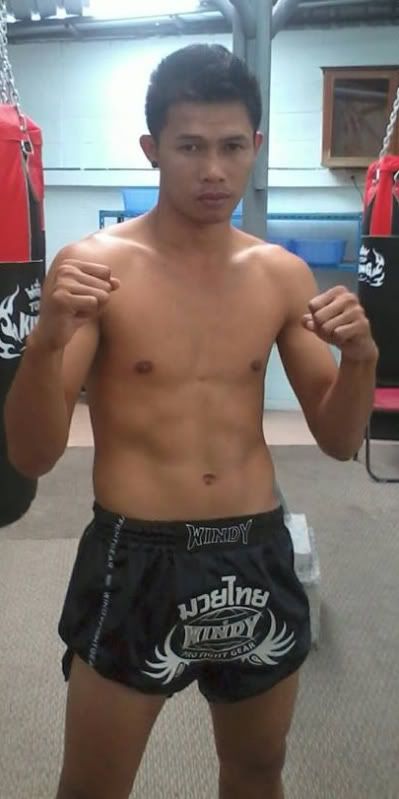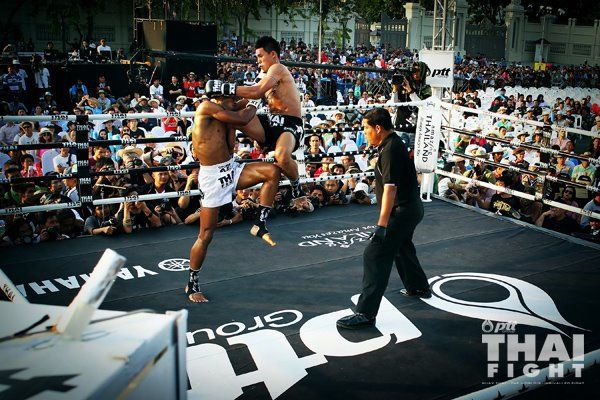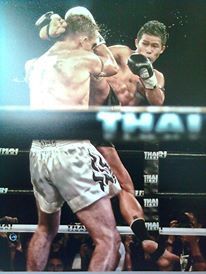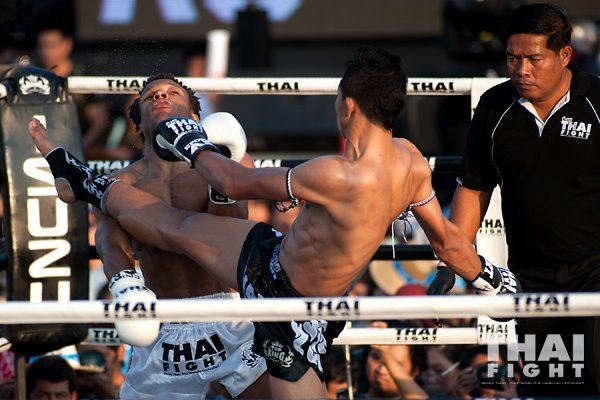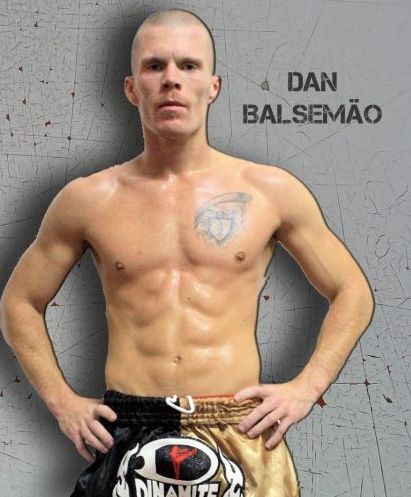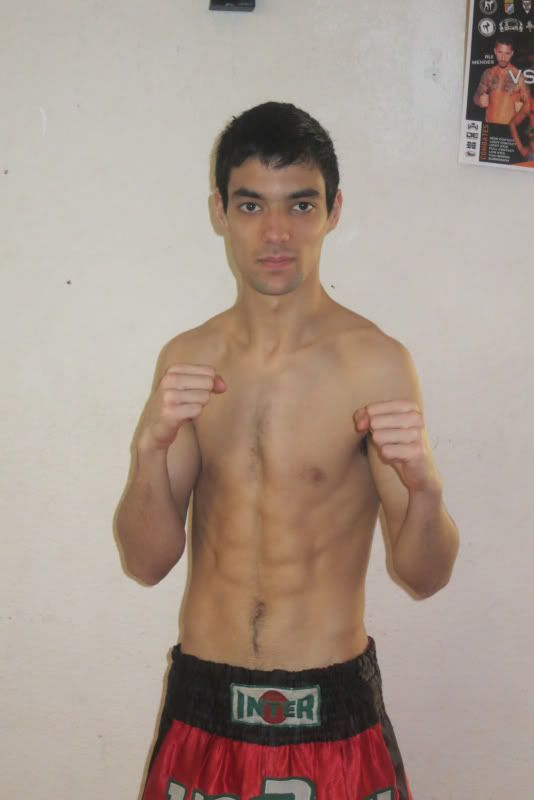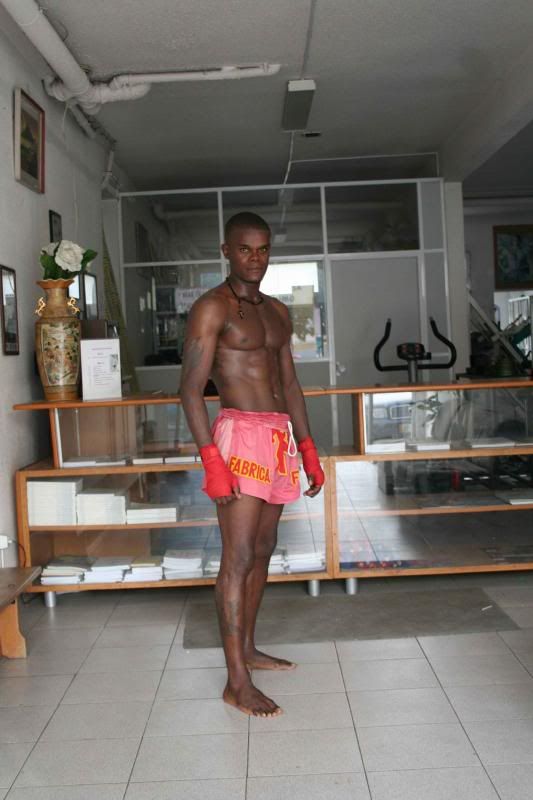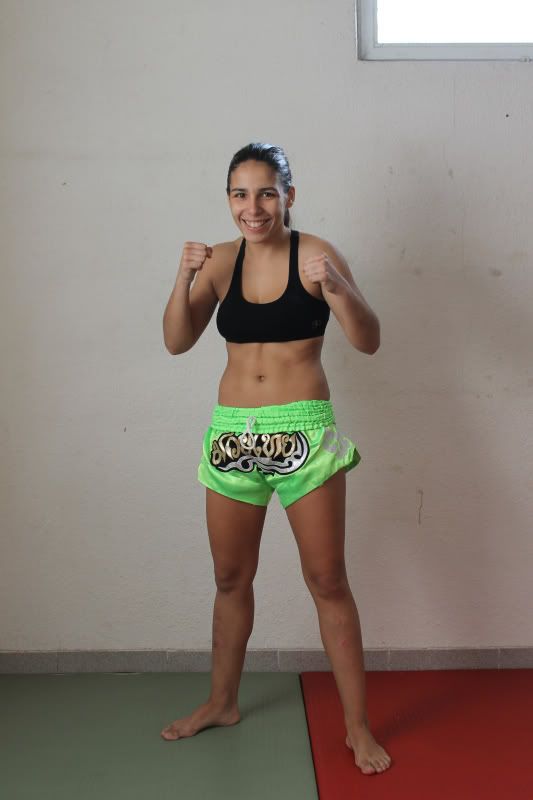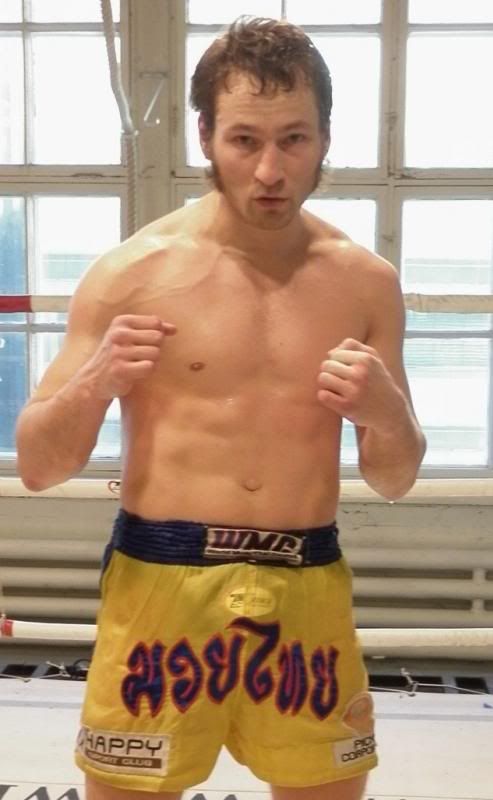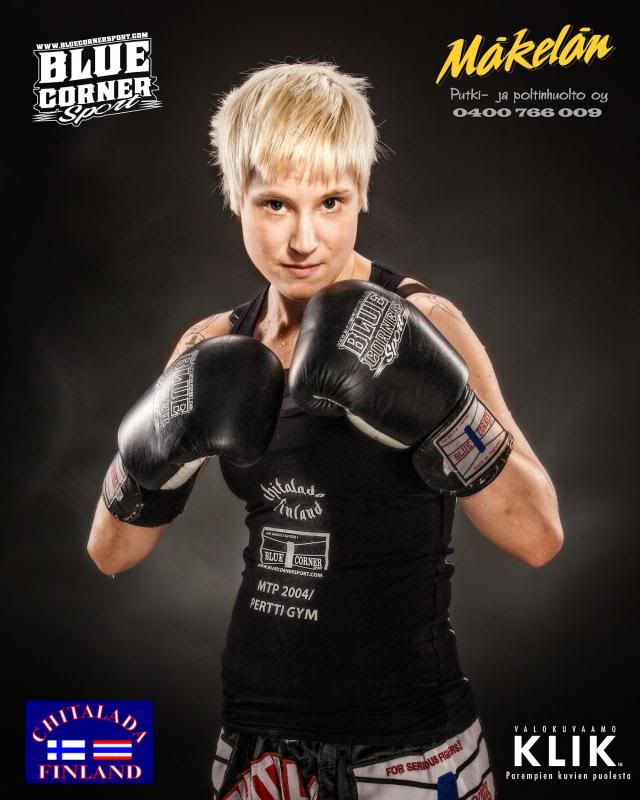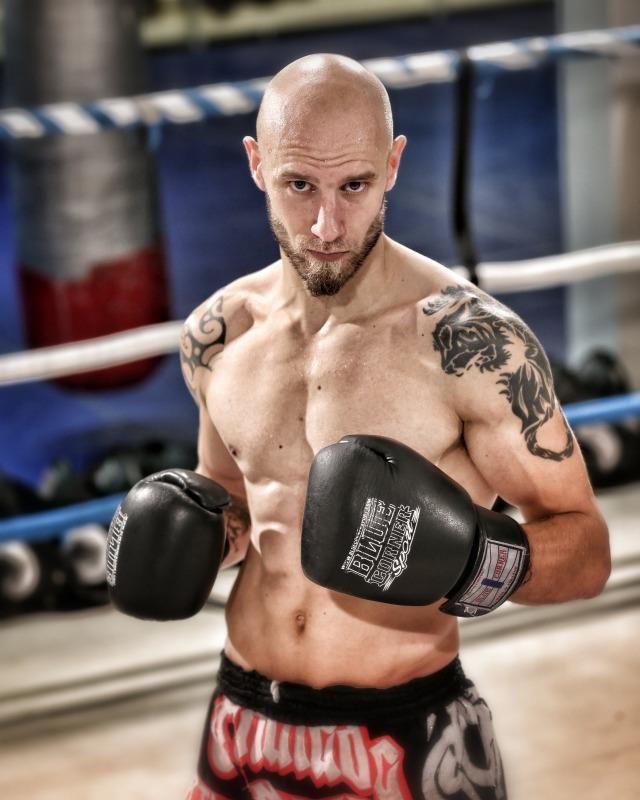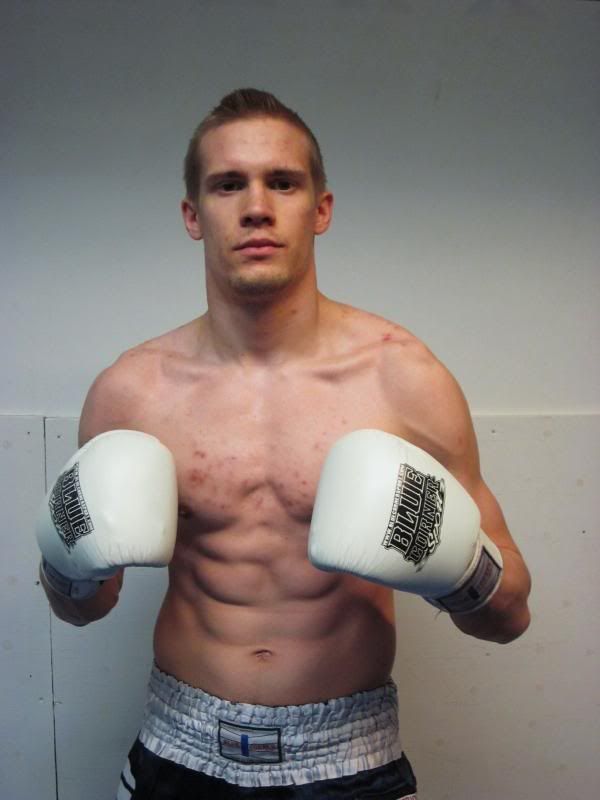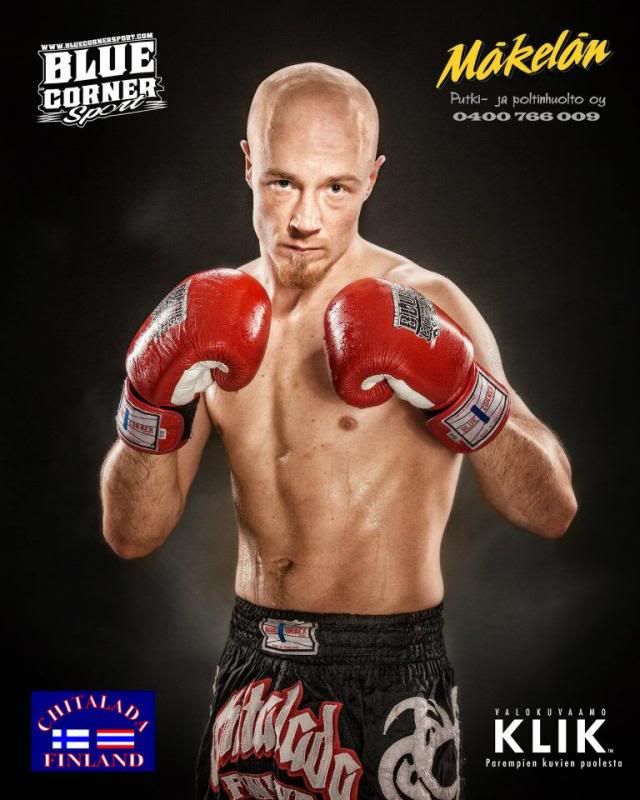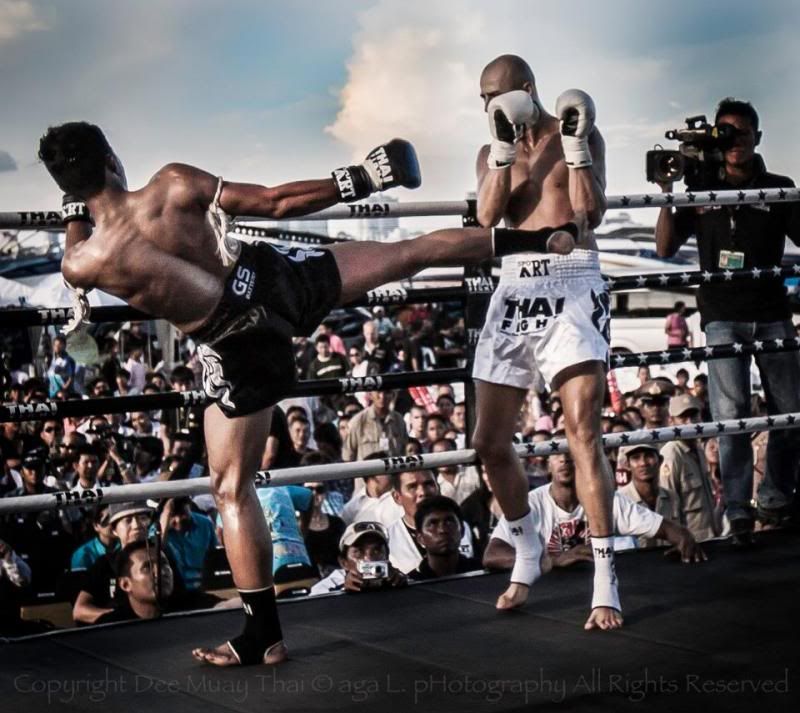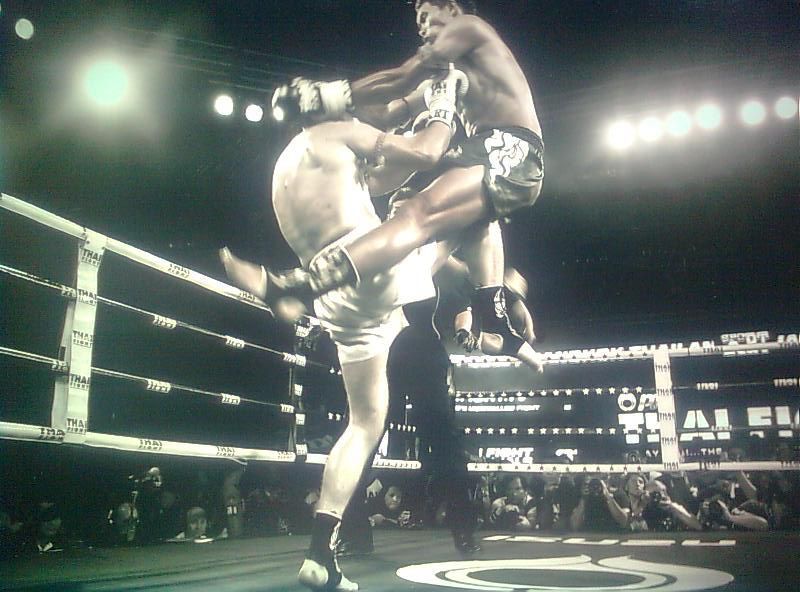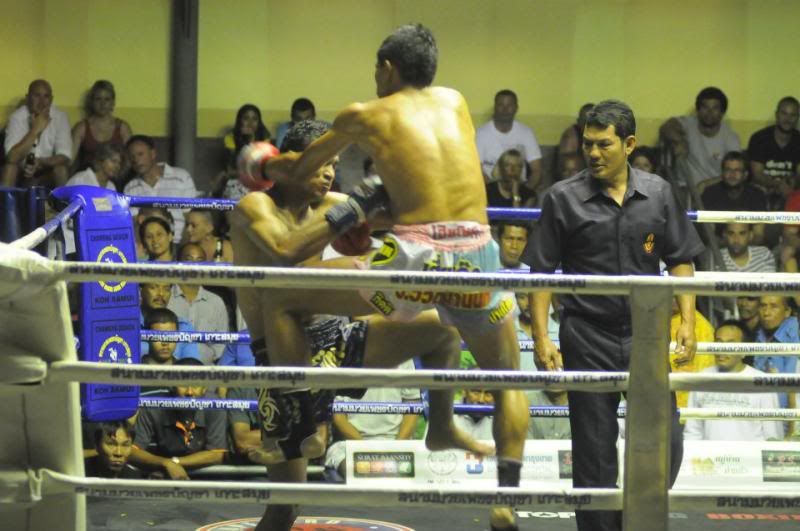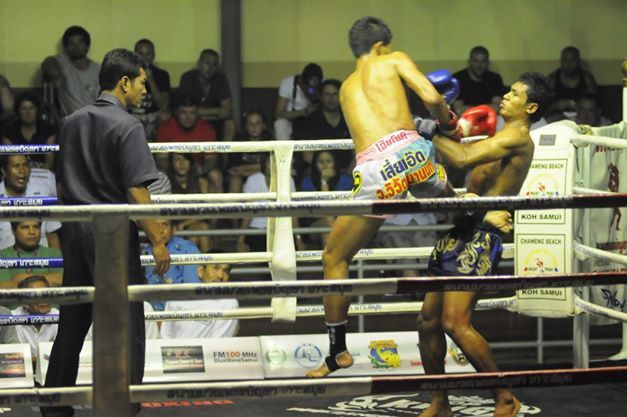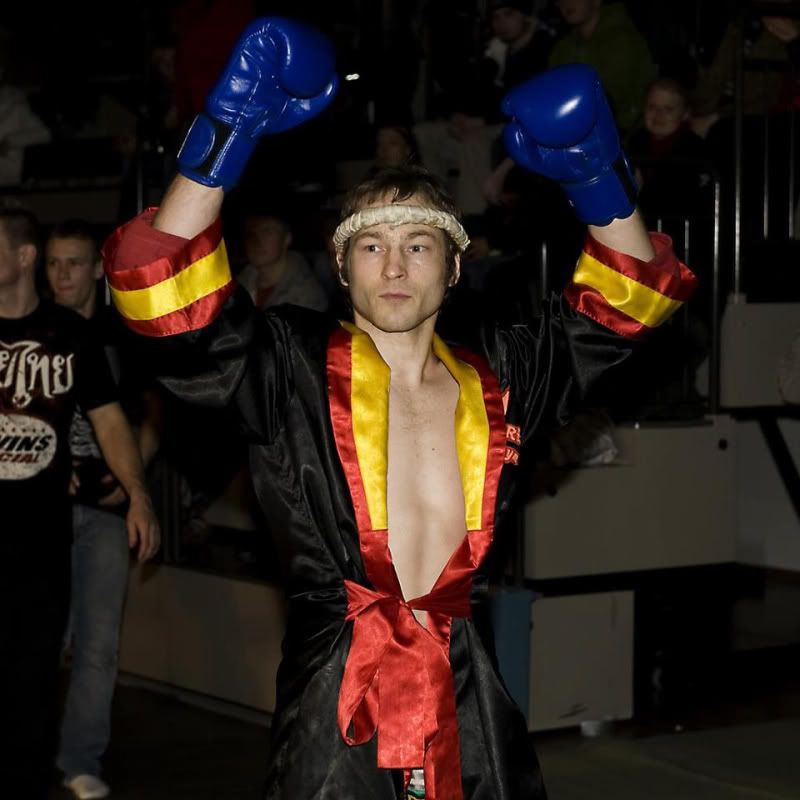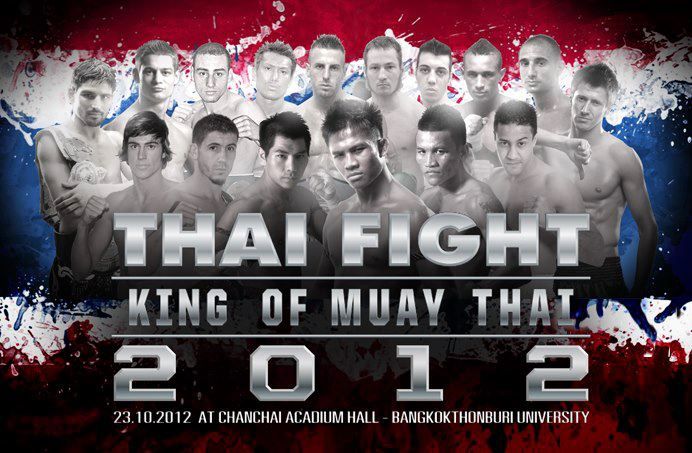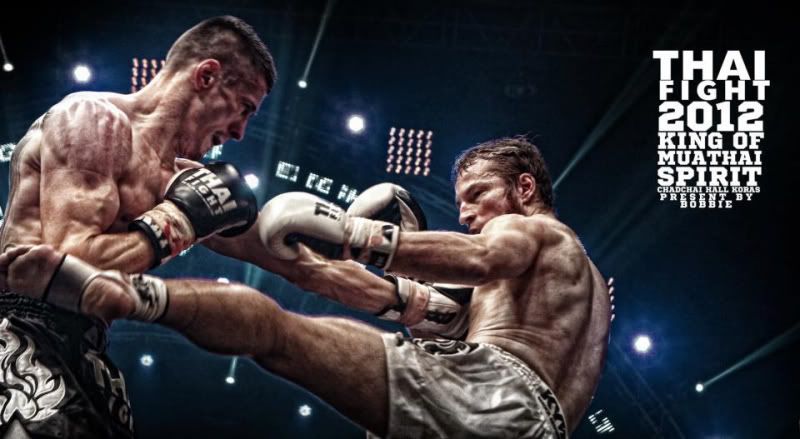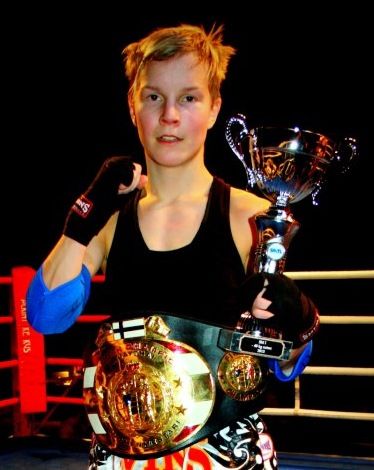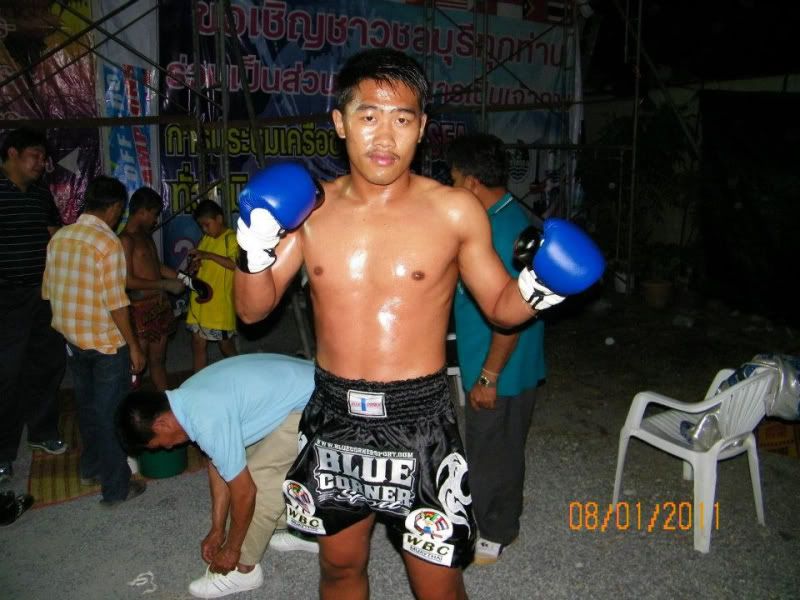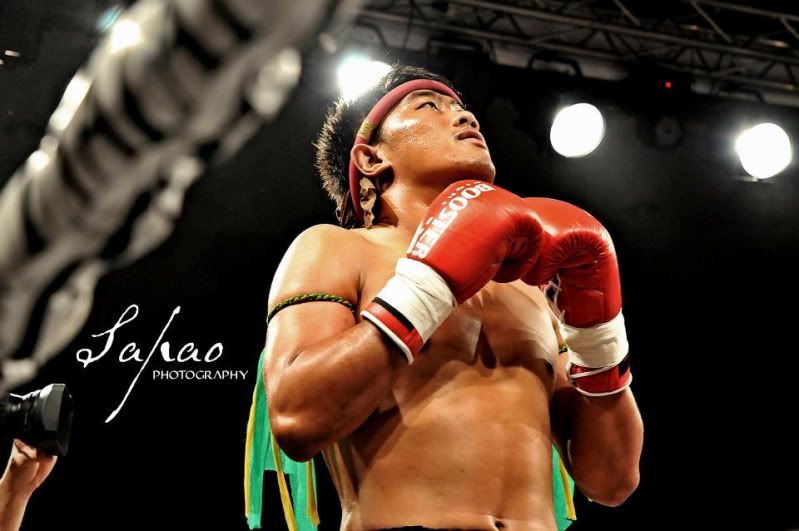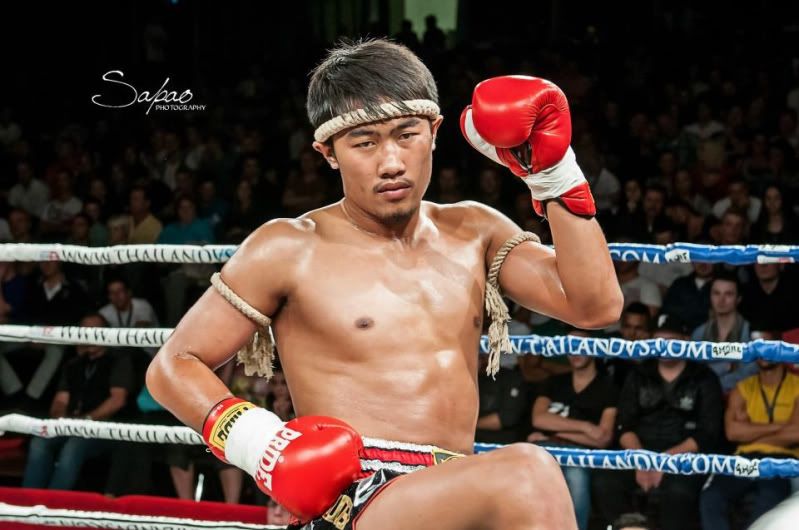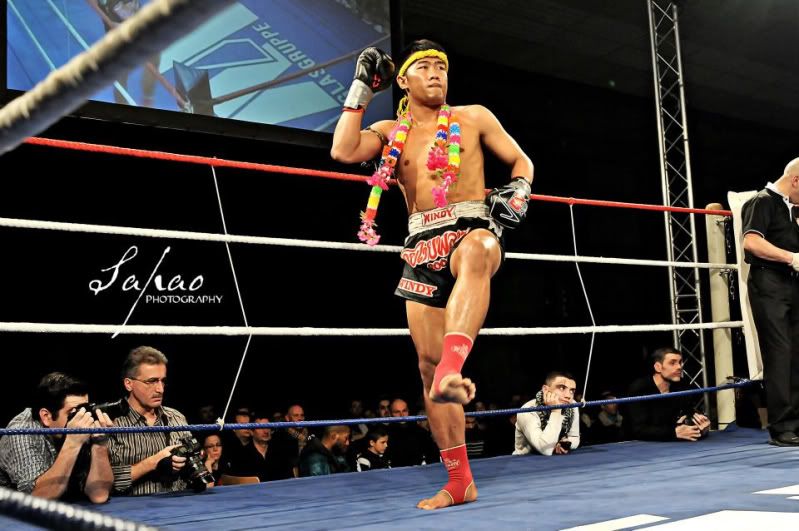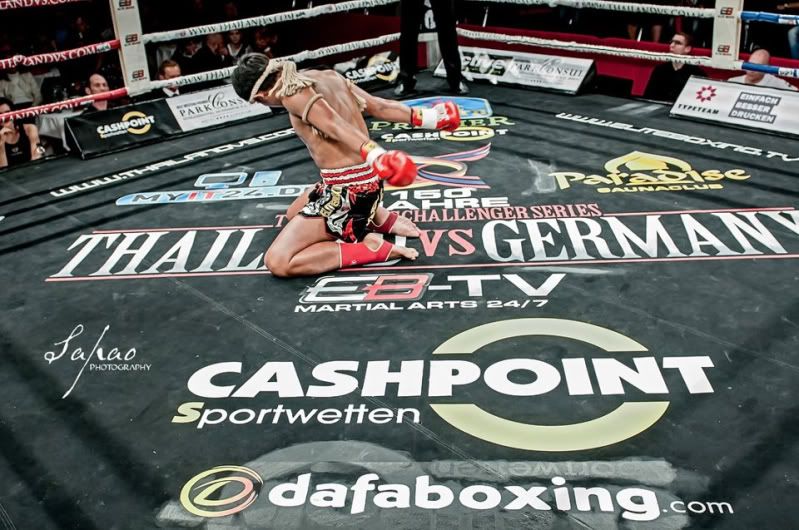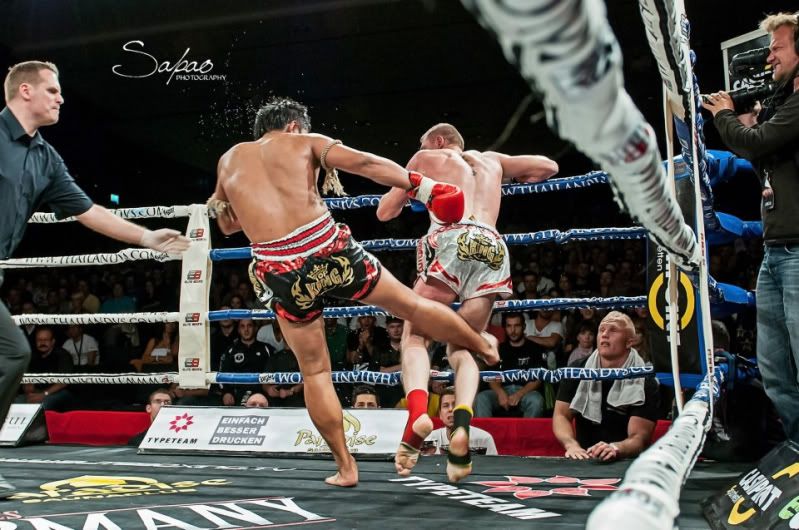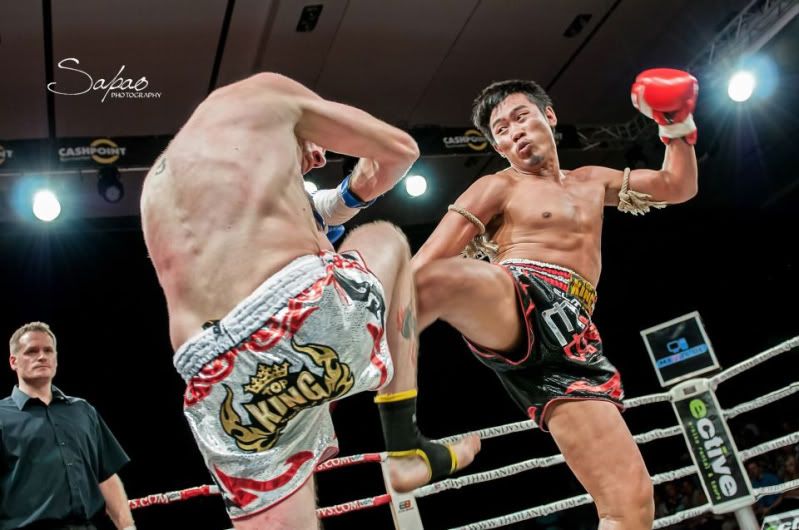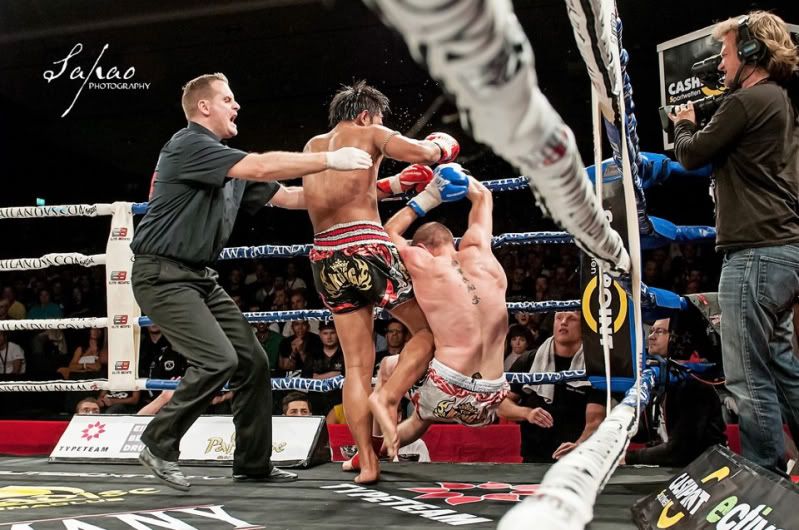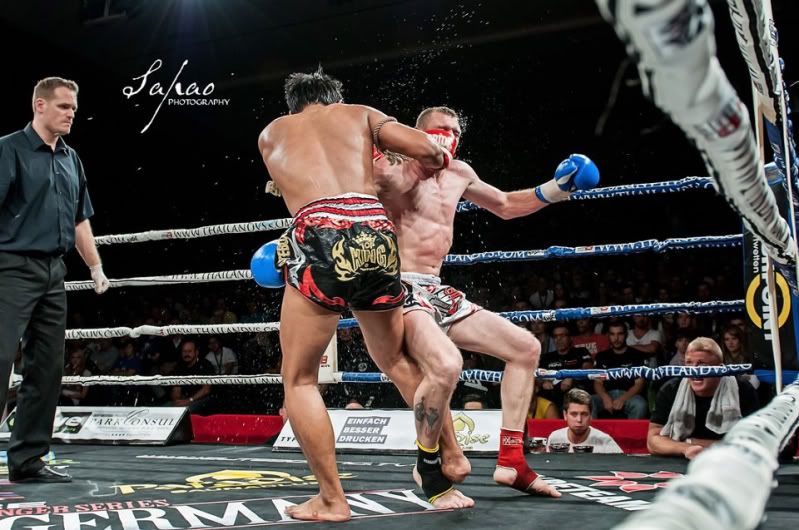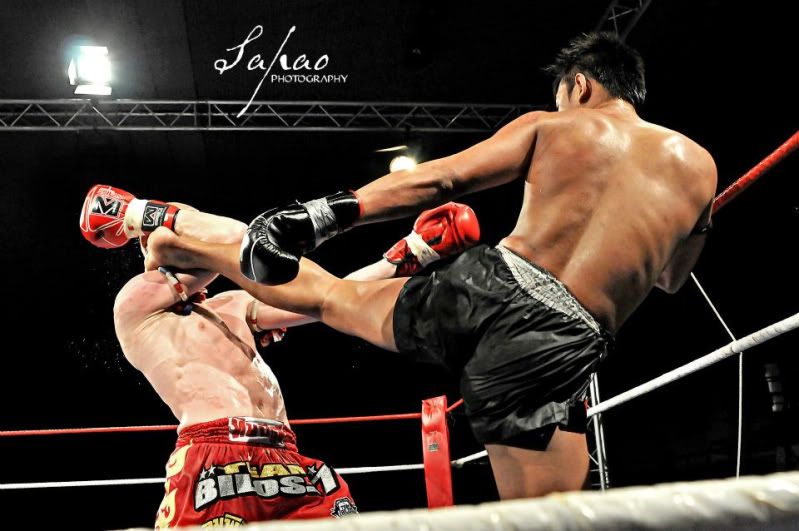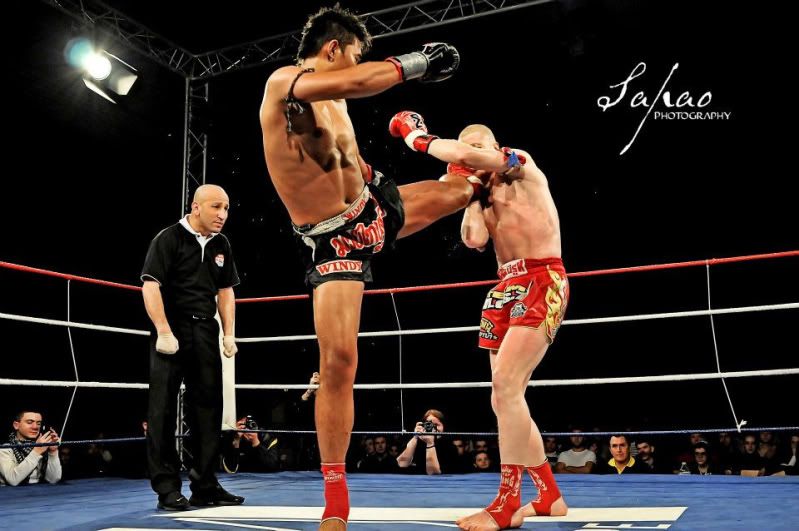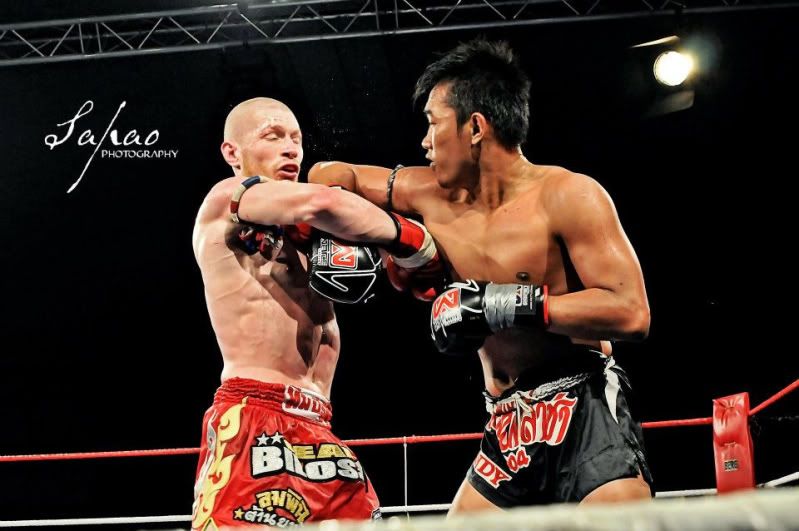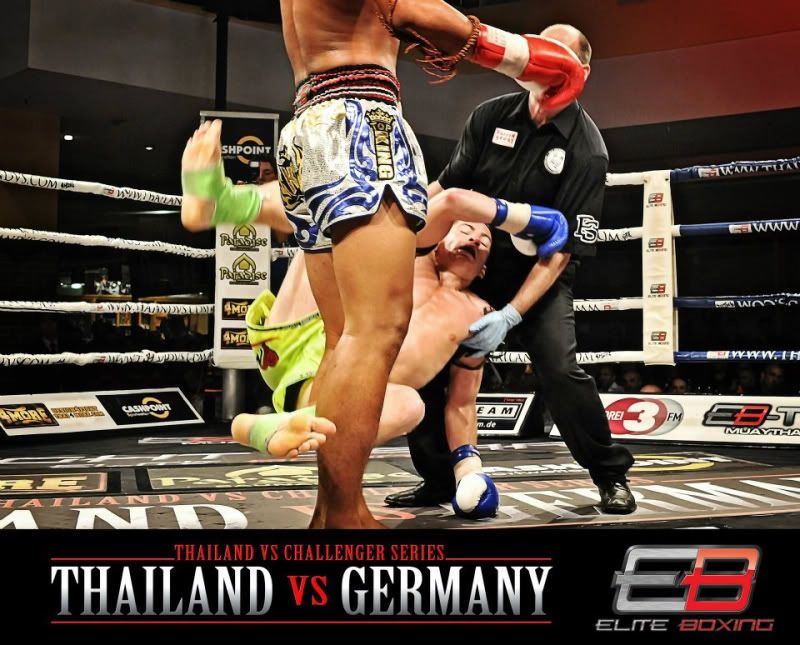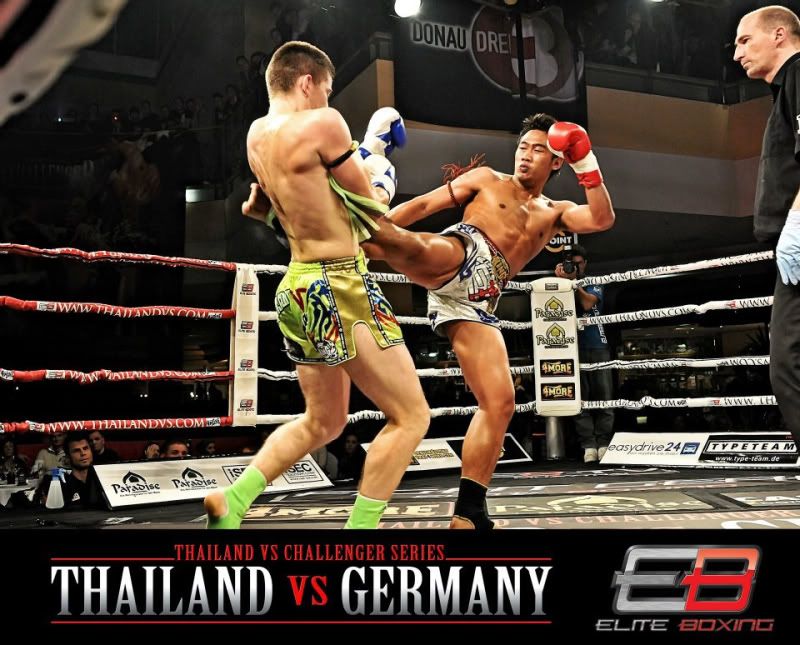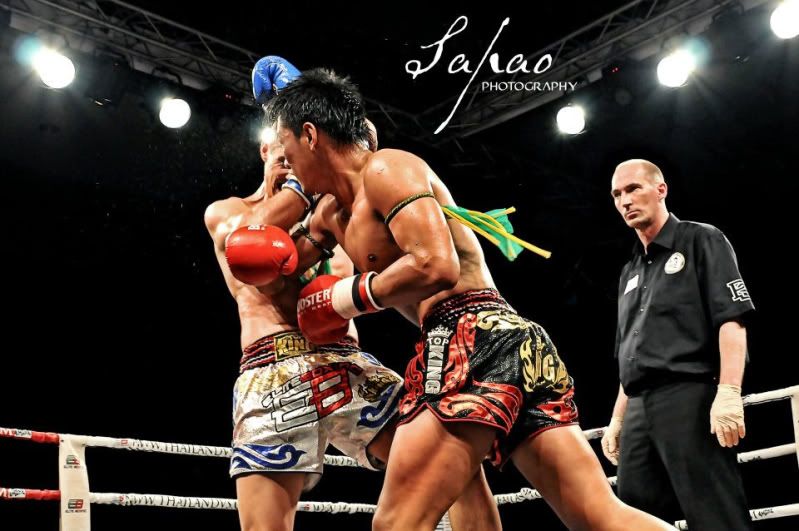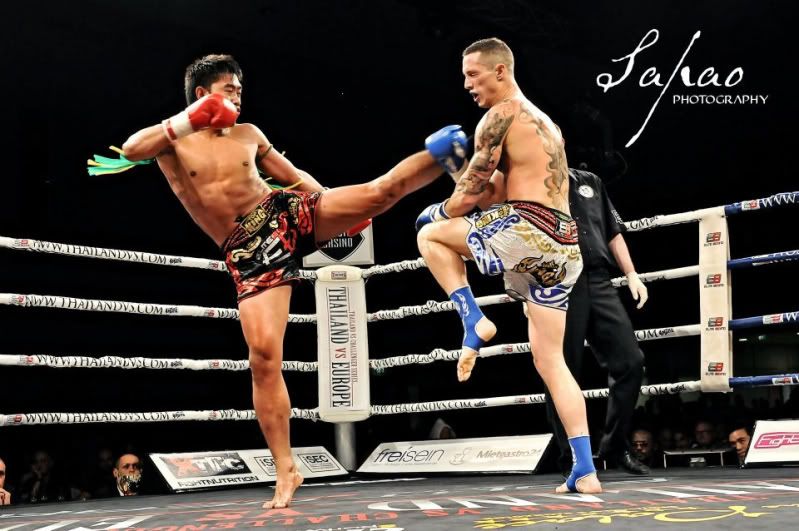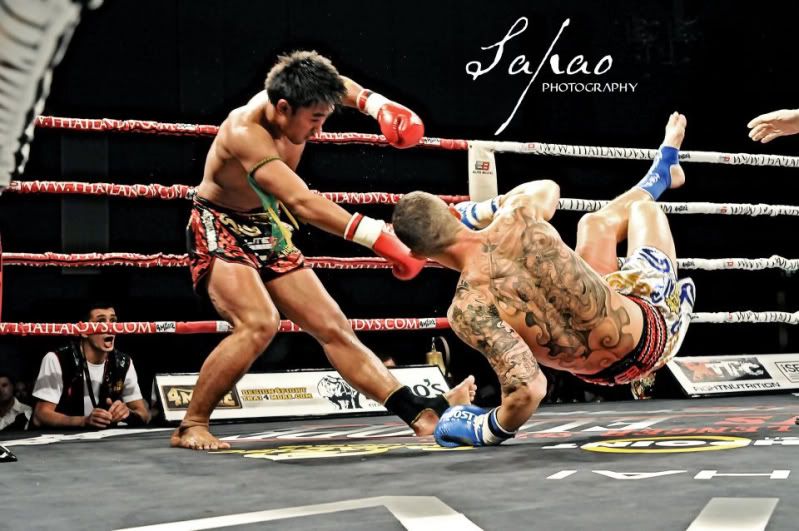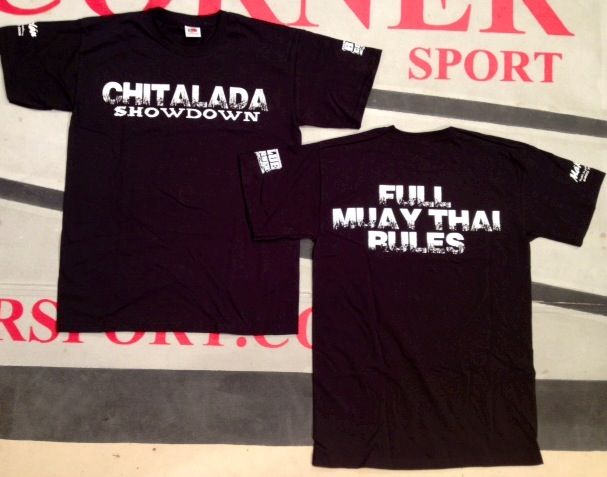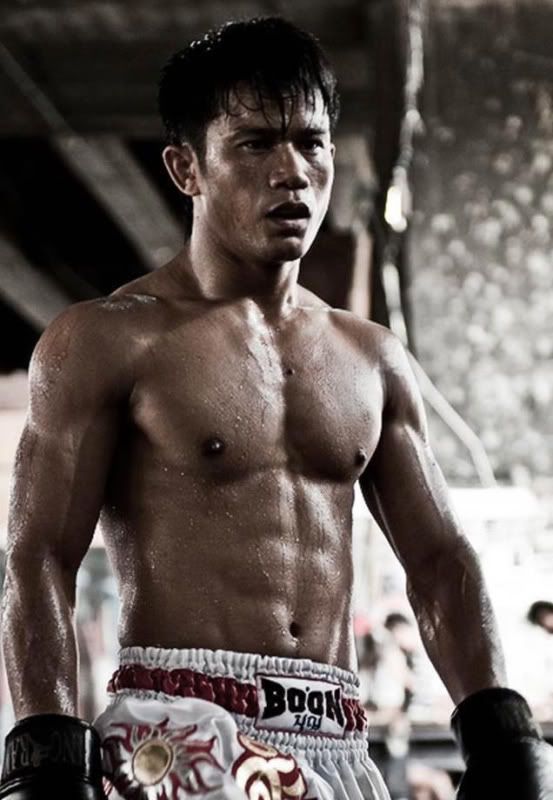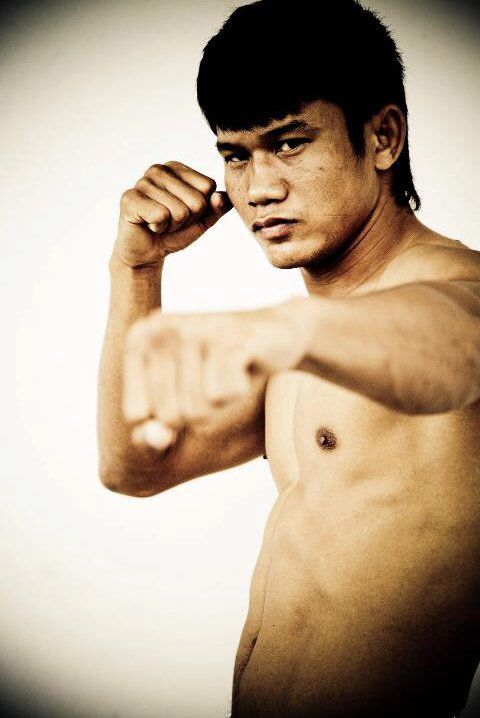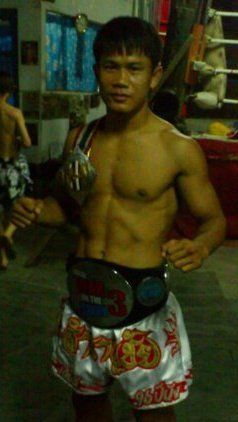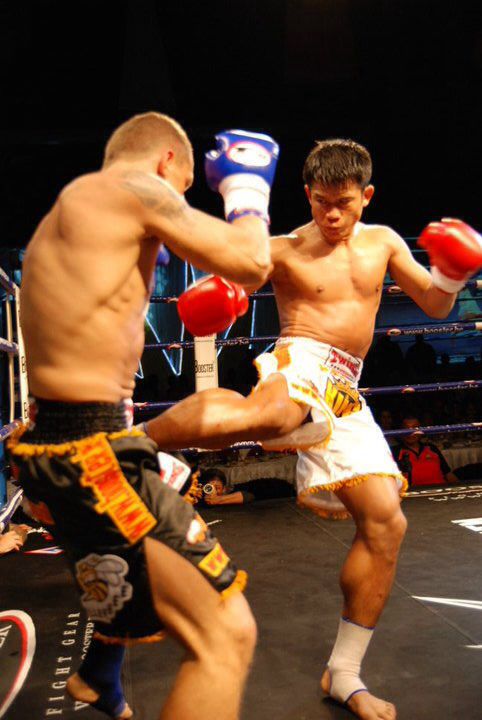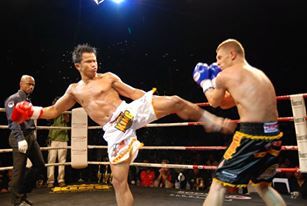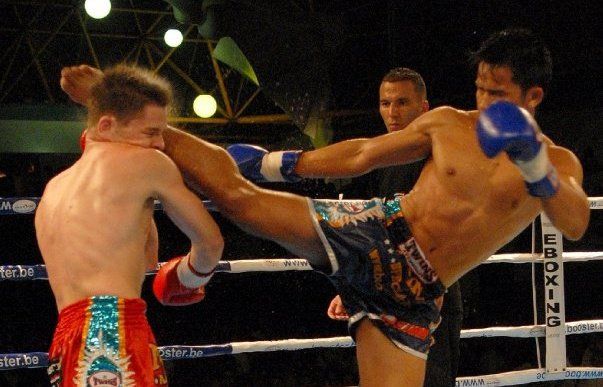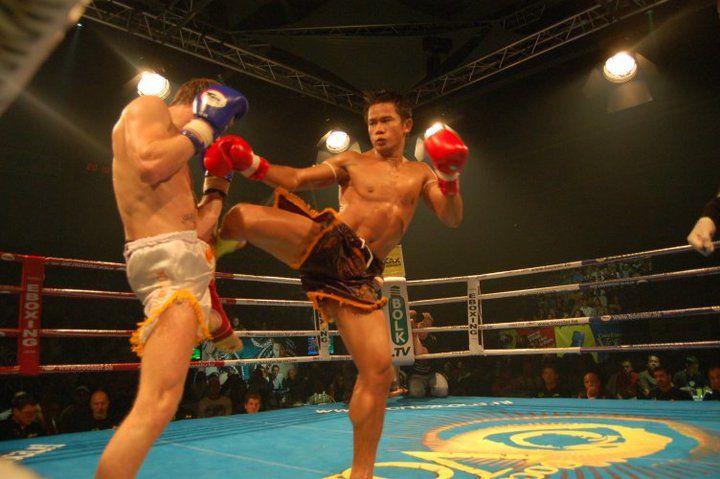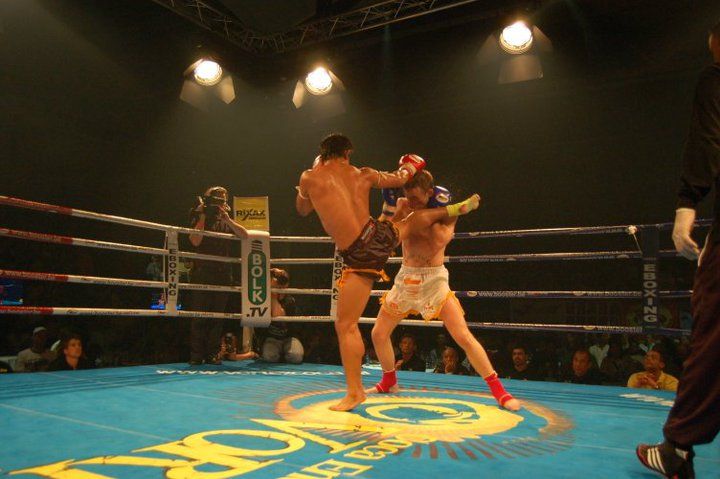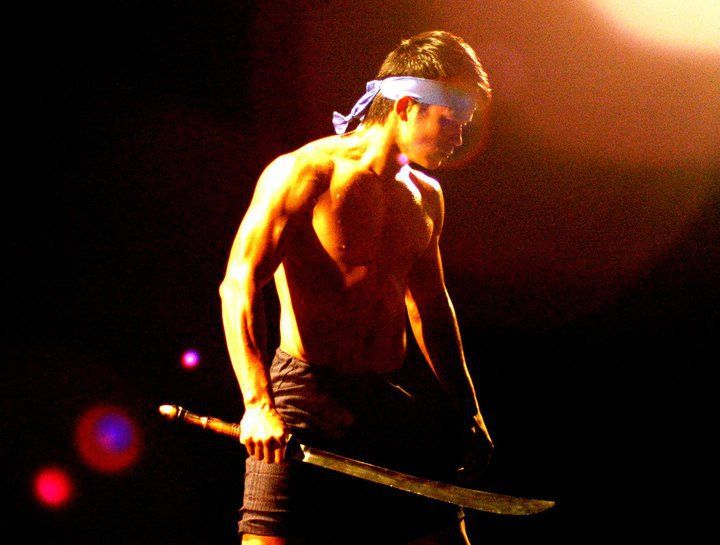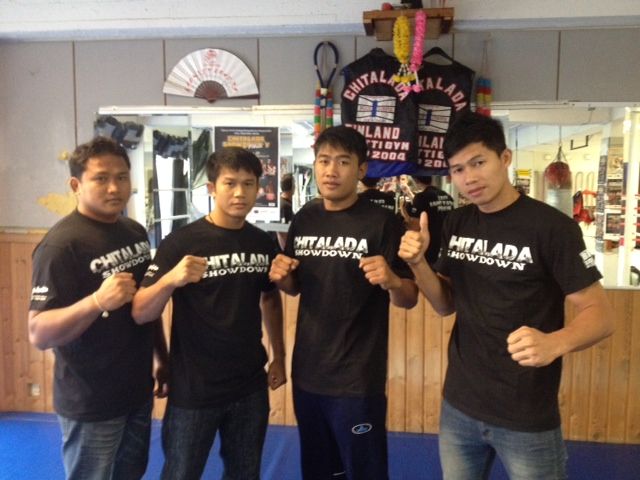Mielenkiintoinen juttu Samranchaista:
Samranchai and Family Muay Thai Dynasty
Posted on: August 17th, 2011 by Philip No Comments
Samranchai 96 Penang and the Bamrungrai Family Muay Thai Dynasty
Samranchai 96 Penang has been one of Thailand’s most successful Muay Thai exports in recent years building up a perfect 10 and 0 record against the cream of the world’s light middleweights, he has fought in Europe, Japan and Dubai beating amongst others, Warren Stevelmens and Ray Staring in Holland and Yuya Yamamoto in Japan.
In the ring Samranchai exudes a cool efficiency employing a tight defence and a full arsenal of weapons. The package he presents has not come easily of course; it is a product of years of disciplined training and paying his dues working his way up through the ranks. Samranchai’s story is a particularly interesting one though for he is a product of the passage of knowledge and technique down through a fighting family.
Samranchai hails from Buriram, arguably Thailand’s richest source of Muay Thai talent. He is part of the Bamrungrai fighting family.
In the 1970s Samranchai’s great uncle, known as Chang Liang had a few fights on the Buriram fight scene. By his own admission he wasn’t a great fighter but was fascinated by the sport and studied how fighters won their fights. From his observations he developed a set of training ideas which he developed into a quite unique style (when an individual develops his own style like this it is dubbed locally as kru lak mak jam).
Chang Liang set up a small gym with just 5 boxers who were either his sons or his nephews . In addition to teaching original technique he showed great innovation and vision, he had his boxers run and shadow box with leg and hand weights to develop strength, he had them punch and kick leaves on trees to improve their speed and accuracy.
Chang Liang taught the boys to use all weapons and put a particular focus on footwork telling the boys they must be able to move instantaneously in all directions. He drilled these basic movements. The 3 nephews were actually blood brothers, Sikun, Kaisuwit and Kaisumut. Kaisuwit recalls spending two and a half years just going through the basics, again and again so that when it came to fighting, the movements would be natural….and how! Kaisuwit had his first fight at the age of 9 and clocked up 23 victories from his first 23 fights. At the age of 14 he was developing a big name locally, other boys were going to fight in Bangkok but Kaisuwit had a problem; he wasn’t growing, he was still only 35kg- too small to fight in the Bangkok stadiums so he stayed with his uncle, following him to Loei province when the uncle went to work there as a motor mechanic. Kaisuwit actually followed his uncle into the trade learning to be a mechanic while he continued to train and fight in the evenings. All 3 brothers stayed with their uncle and trained and developed though perhaps Kaisuwit was the one who was most committed, he fought regularly revelling in the opportunity to test and hone his skills and he did very well. By the time he was 17 he had had 98 fights, the majority of them impressive victories and he was developing a big name across Isan. Importantly his body had at last started to grow; he was ready to go to Bangkok. Fighting in their native Buriram the brothers came to the attention of the renowned trainer Ajahn Pramote . He gave Kaisuwit the fight name Suan Kela Nongkhi and arranged for the brothers to train at the Narajawat camp in Bangkok.
The brothers arrived in Bangkok in the mid 1980s which was a boom time for Muay Thai, Kaisuwit was now at the minimum weight for stadium fighters-100lbs. At that time there was no limit on the frequency with which boxers could fight, Kaisuwit typically fought 2/3 times a month. The training at Narajawat was excellent with committed trainers who knew technique and, as importantly, how to win fights in the Bangkok stadiums. Kaisuwit also comments that perhaps the trainers job was easier then, Thailand had yet to develop, the boxers at the gym came from real poverty, if they won a bicycle, he says, they were delighted, he and the other fighters listened, concentrated and trained hard .Fighting regularly against progressively higher standard boxers helped Kaisuwit to develop rapidly. But he assures that it was the basic technique which he learnt from his uncle that was the key to his success. Over the following years all 3 brothers gained much success, Kaisuwit worked his way up through the rankings and in 1988 won the light bantam and bantamweight titles at Rajdamneon and then the Thailand title. His excellence was confirmed when he was named the 1988 ‘Fighter of the Year’, Sikun too had an excellent career and found his qualities equally suited to International boxing, he picked up Rajadamneon, Thailand and PanAsian International rules titles and boxed in several countries being a part of the Sahasompop stable. Younger brother Kaisumut too worked his way to the top of the Rajdamneon standings though he did not win a belt.
The boys’ uncle Chang Liang remained a rather enigmatic, mystical figure content to stay in the background, attending just 2 of Kaisuwit’s Bangkok fights, his first as a main event fighter and the first time he challenged for the stadium belt. One can only imagine the quiet pride however as his charges used his style to reap such success, indeed there can be no higher praise than to be announced ‘Boxer of the Year’.
At the age of 25 Kaisuwit called time on his career and returned to Buriram. There was only ever going to be one career for him, thus it was no surprise that he joined Ajahn Pramote at the famous Nongki Payayuth gym as a trainer. Immediately he gained success, working with the renowned fighters Namkhabuan and Namfon. The technique and style he used to hold pads and teach was what he had learnt from Chang Liang.
Kaisuwit’s experience in the sport had taught him that it is crucial for a boxer to have good management, the manager must have excellent relations with promoters but also must be trusted by his fighters and trainers. In Buriram Kaisuwit was especially close to his elder sister and her son, he started teaching the boy the same skills he had learnt years before. The boy listened, did what he was told and showed a real keenness to learn; his name was Samranchai. Kaisuwit knew his nephew had potential but he was desperate to ensure the boy avoided the exploitation by bad management that has and remains a real problem in the world of Muay Thai. Consequently Kaisuwit decided to train and manage the youngster himself, but he could not do it alone, hence his teaming up with Hier Tee who ran the 96 Penang gym. Kaisuwit had known Hier Tee for many years and felt confident that this was a decent man with whom he could work. Samranchai was 12 when Kaisuwit brought him to Bangkok. The 2 settled at the gym and were later joined by Kaisuwit’s 2 brothers, all using Chang Liang’s technique as the basis of their teaching. Kaisuwit’s confidence in Samranchai’s future was well founded, the boy made rapid progress through the ranks at the Bangkok stadiums and gained the Thailand 135lb title. His temperament and self discipline have allowed him to continue fighting until today at the age of 31, far longer than most Thai boxers, this has been particularly useful to Samranchai as he is now able to fight at a weight (66-70kg) popular with international audiences so Samranchai has been invited to fight all over the world, and make good money doing so. Samranchai remains undefeated against International fighters.
For around 7 years Sit Or’s boxers shared the Penang Gym. This enabled fighters such as Nong O , Petmongknol and Prakisaeng to develop and take steps on the road to great success working with the 3 brothers and their friend Siripeth Por Tawatchai. The boxing world noted the superbly prepared fighters the gym was turning out and in 2007 Kaisuwit was named Trainer of the Year.
Today at the gym the family tradition continues, the tall skinny kid whipping double kicks into the pads is Sakmongkol, another nephew, 17 years old and already no.3 ranked fighter in the 115lb division at Rachdamneon Stadium…..watch out for Sikun’s son Petthair, and their cousins Saknoi and Daothai. All of them are working hard and making their way up the Rajdameneon and Lumpinee rankings. All listen, concentrate and are studies of intensity when they train. Two younger nephews have recently arrived from Buriram. Full of promise, full of hope.Certainly, they have come to the right place, the trainers, Kaisuwit, Sikun, BanthongPitthak Tongluang 5, former head trainer at Naratrikul Gym and Siripeth Por Tawatchai, former Rajadamneon no.1 ranked boxer(he actually suffered a points loss to Kaisuwit!) work with total effort;, Muay Thai is their lives, they know just how important it is to these boys to fight…..and to win, to make money for their families and to do their bit to keep the tradition, the sport and art of Muay Thai alive.
96 Penang Gym
Klong Tuoy , Bangkok
REAL Muay Thai
96 Penang welcomes international students, fighters and visitors to join them to train. Trainers/prospective instructors would benefit from time at the gym.
Philip Wilson
- The Next level ? Personal training Bangkok London
July 2011
Ja Thaimaan "joukkue" saapunut Tampereelle:
